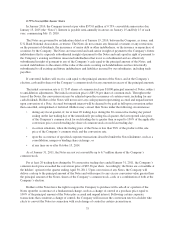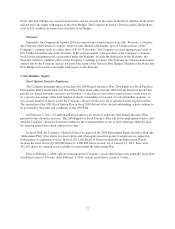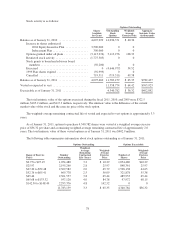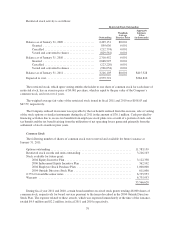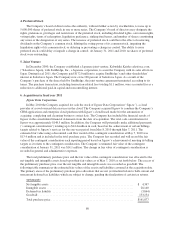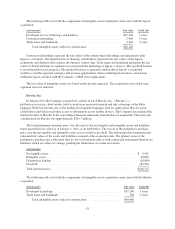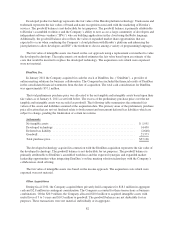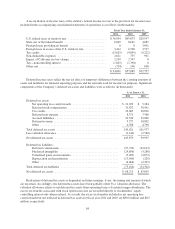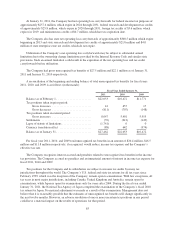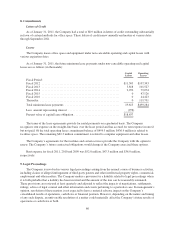Salesforce.com 2011 Annual Report Download - page 93
Download and view the complete annual report
Please find page 93 of the 2011 Salesforce.com annual report below. You can navigate through the pages in the report by either clicking on the pages listed below, or by using the keyword search tool below to find specific information within the annual report.
At January 31, 2011, the Company had net operating loss carryforwards for federal income tax purposes of
approximately $257.6 million, which expire in 2024 through 2031, federal research and development tax credits
of approximately $25.8 million, which expire in 2020 through 2031, foreign tax credits of $3.6 million, which
expires in 2019, and minimum tax credits of $0.7 million, which have no expiration date.
The Company also has state net operating loss carryforwards of approximately $308.5 million which expire
beginning in 2013 and state research and development tax credits of approximately $21.8 million and $4.0
million of state enterprise zone tax credits, which do not expire.
Utilization of the Company’s net operating loss carryforwards may be subject to substantial annual
limitation due to the ownership change limitations provided by the Internal Revenue Code and similar state
provisions. Such an annual limitation could result in the expiration of the net operating loss and tax credit
carryforwards before utilization.
The Company had gross unrecognized tax benefits of $27.5 million and $22.1 million as of January 31,
2011 and January 31, 2010 respectively.
A reconciliation of the beginning and ending balance of total unrecognized tax benefits for fiscal years
2011, 2010, and 2009 is as follows (in thousands):
Fiscal Year Ended January 31,
2011 2010 2009
Balance as of February 1, ....................... $22,053 $16,472 $11,771
Tax positions taken in prior period:
Gross increases ........................... 41 457 17
Gross decreases ........................... (811) (707) (148)
Tax positions taken in current period:
Gross increases ........................... 8,047 5,401 5,955
Settlements .................................. (39) (212) (149)
Lapse of statute of limitations .................... (1,741) 0 0
Currency translation effect ...................... (88) 642 (974)
Balance as of January 31, ....................... $27,462 $22,053 $16,472
For fiscal year 2011, 2010, and 2009 total unrecognized tax benefits in an amount of $20.4 million, $16.5
million and $11.8 million respectively, if recognized, would reduce income tax expense and the Company’s
effective tax rate.
The Company recognizes interest accrued and penalties related to unrecognized tax benefits in the income
tax provision. The Company accrued no penalties and an immaterial amount of interest in income tax expense for
fiscal 2011, 2010 and 2009.
Tax positions for the Company and its subsidiaries are subject to income tax audits by many tax
jurisdictions throughout the world. The Company’s U.S. federal and state tax returns for all tax years since
February 1999, which was the inception of the Company, remain open to examination. With few exceptions, all
tax years in most major jurisdictions, including Canada, United Kingdom and Australia, remain open for
examinations, while Japan is open for examinations only for years after 2004. During the fiscal year ended
January 31, 2011, the National Tax Agency of Japan completed the examination of the Company’s fiscal 2010
tax return for Japan. No material adjustment was made as a result of the examination. Management does not
believe that it is reasonably possible that the estimates of unrecognized tax benefits will change significantly in
the next twelve months. However, an adverse resolution of one or more uncertain tax positions in any period
could have a material impact on the results of operations for that period.
85


